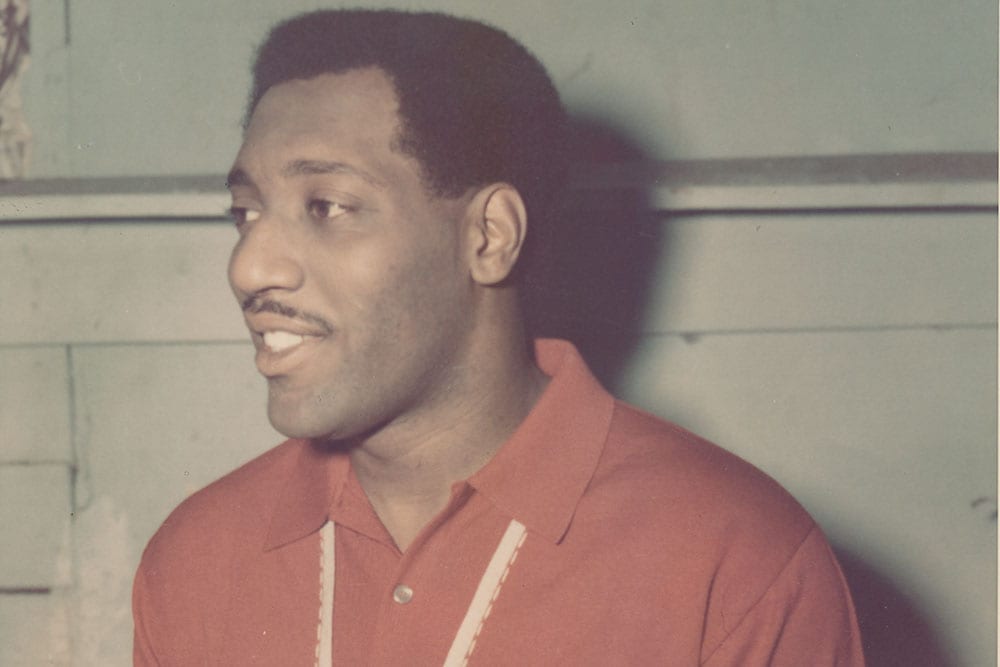“Try a Little Tenderness” – Otis Redding

“Try a Little Tenderness” by Otis Redding: A Soulful Masterpiece of Compassion and Love
Otis Redding’s “Try a Little Tenderness” stands as one of the most iconic and powerful soul songs of the 1960s. Released in 1966, the song became one of Redding’s signature pieces, blending raw emotion, impeccable vocal delivery, and a message that resonated deeply with listeners. It was originally written in 1932 by Jimmy Campbell, Reg Connelly, and Harry M. Woods, but it was Redding’s version that elevated it to legendary status, transforming it into a timeless classic.
The song’s message revolves around the idea of showing compassion and tenderness to a woman who is worn down by the struggles of life. Redding sings about the importance of patience and understanding, urging men to show love and gentleness instead of harshness. The lyrics “You won’t regret it, no, no / Young girls, they don’t forget it / Love is their whole happiness” remind listeners of the power of love and how small acts of tenderness can have a lasting impact on relationships.

Redding’s rendition of the song is infused with deep emotion and soulful expression. He begins the song softly, almost pleadingly, encouraging the listener to embrace gentleness. As the song progresses, his voice becomes increasingly powerful, reflecting the rising intensity of emotion. His vocal delivery is a masterclass in soul music, capturing both vulnerability and strength. Redding’s unique ability to convey profound feeling through his voice is what sets “Try a Little Tenderness” apart from other versions of the song.

The arrangement of the song also plays a critical role in its impact. The slow, deliberate build-up mirrors the rising emotional plea in the lyrics. Backed by a steady rhythm section and rich instrumentation, including horns and strings, the song crescendos into a powerful, almost cathartic climax. This gradual buildup of intensity is a hallmark of Redding’s style and is what gives the song its unforgettable emotional punch.
“Try a Little Tenderness” is also notable for how it balances vulnerability with masculinity. Redding’s performance conveys strength, but it is a strength grounded in empathy and care. In an era where many songs focused on dominance or romantic conquest, this song stood out for its emphasis on emotional connection and gentle love. Redding’s ability to channel this message through his passionate delivery makes it a timeless anthem for relationships built on kindness and compassion.

The song became one of Redding’s biggest hits and has continued to influence generations of artists. It has been covered by numerous musicians across different genres, a testament to its universal appeal. However, few versions match the emotional depth and power of Redding’s original rendition. His performance of “Try a Little Tenderness” during his live shows, such as the famous Monterey Pop Festival in 1967, further solidified the song’s place in the annals of music history, as audiences were captivated by his intensity and passion on stage.
Beyond its success as a hit, “Try a Little Tenderness” reflects Redding’s role in shaping soul music during the 1960s. He brought a new level of emotional complexity to the genre, blending elements of gospel, blues, and rhythm and blues into his work. His ability to take an older standard and transform it into a soul masterpiece is a testament to his creativity and artistic vision.

In conclusion, Otis Redding’s “Try a Little Tenderness” is a masterful blend of emotion, soul, and compassionate messaging. Its powerful vocal performance, combined with its message of tenderness and care, has made it one of the most enduring and beloved songs in music history. Redding’s ability to convey the deepest human emotions through his voice ensures that this song will continue to resonate with listeners for generations to come.











